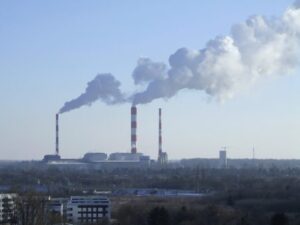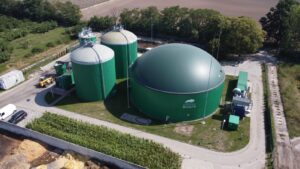Reserve power plants in Germany are the missing half of the Energiewende – Piotr Grądzik writes, a co-worker of BiznesAlert.pl.
Blowing the RES bubble
Each year at the end of November we wait impatiently for the Bundesnetzagentur new report. And as the child figures out what the Santa Clause will bring (because it wrote the letter to him) the same I, as a careful observer of German energy sector, figure out what the report will bring.
Monitoringbericht 2017 published few days ago is worth attention, because it contains specific data without commentary on the German Electricity system. One could say: “it shows as it really is”.
The presented data help to understand how does the electricity system works with great participation of RES. It is worth noticing the application of remedial measures ensuring its safe functioning, measures that in the past – with low participation of RES – were not needed. The electric power reserve service needs to be underlined. But first things first.
The history of renewable energy sources in Germany began conventionally with the adoption of RES act in 2000, which ensured them a good developmental conditions. This was possible only after the SPD and the Greens took over the power in Germany two years earlier. Thanks to this event the ”Energiewende” notion needs no explanation today.
As a result of the energy policy the RES power installed capacity was successively growing. The share of renewable sources in covering the demand for electricity increased from 6.5% in 2000 to 16.9% in 2010 (an increase of about 1% per year).
Although these were noticeable volumes, they were not large enough to affect the level of wholesale energy prices or lead to a significant change in physical power flows in the electricity system.
However, the situation changed after 2010. The reported increases in RES supply were significantly higher (2-3% annually). In 2012, renewable energy sources generated 142.3 TWh, giving way only to brown coal, which, however, was outdistanced by RES only two years later, generating 161.4 TWh. In 2016, the RES supply amounted to 188.3 TWh.
Such large volumes of subsidized energy could not fail to have an impact on the market situation. The periodic negative electricity prices in Germany were inscribed in the local landscape, and the average wholesale prices dropped significantly (with simultaneous increase in prices for end consumers).
While in 2011 the average base price on the EEX exchange was over 56 EUR/MWh, in subsequent years it dropped to just over 49 EUR/MWh (2012), 39 EUR/MWh (2013), 35 EUR/MWh (2014) , 31 euros/MWh (2015), then up to 26.6 euros/MWh in 2016.
Threat to conventional power
Due to the fall in wholesale prices, many conventional power plants lost their profitability. The owners, not seeing any chance to improve the situation, decided to withdraw unprofitable units from service. However, the consent of the energy market regulator is required for this.
So far (as of July 2017) 7.6 GW of conventional power was withdrawn from use with the approval of the Bundesnetzagentur. As most of the withdrawn facilities are located in the south of the country, the power deficit in this part of Germany has intensified, which began to be noticed after the closure of several nuclear power plants in 2011.
On the other hand, generating units with a total capacity of 6.9 GW were found to be critical to ensure safe operation of the power system and despite the fact that they brought losses to the owners, no consent was given for their liquidation. This measure is to prevent the increase in the power deficit in the south of the country (or at least slow its growth).
Reserve at the expense of a citizen
The government’s response to the situation was the adoption of the regulation on reserve power plants in 2013. A new service was created at that time, the so-called network reserve (Netzreserve), commonly known as the winter reserve. It is provided in the period from October to March by power plants located in the south of Germany, which lost their profitability and wanted to discontinue the activity, but their liquidation was officially stopped. In addition, power plants from other countries located south of Germany, i.e. Austria, Italy, France and Switzerland, provide it for the German power system.
German reserve power plants operate outside the energy market and are appointed to work only on the instructions of the TSO, to counteract the power grid overloading the power flows from north to south.
The costs of maintaining them in readiness and each activation are covered by energy buyers.
The demand for the network reserve is calculated by the transmission system operators for each winter half-year, and subsequently approved by the Bundesnetzagentur.
In the initial years, the demand for network reserve was small (e.g. for the winter of 2013/2014 it was set at 2.5 GW). At that time, the transmission system operators were using reserve power plants sporadically, only in exceptional situations, and the service costs were negligible.
However, when comparing data from the following years, the situation is clearly deteriorating.
The missing half of Energiewende
The latest Monitoringbericht 2017 report shows that in 2016, the reserve power plants were appointed for operation for a total of 108 days. In the first quarter of 2016, the contracted reserves amounted to 7.5 GW, while in the fourth quarter to 8.4 GW. The cost of maintaining the power plants in readiness amounts to 177.4 million euros, and the cost of their activation is another 107.4 million euros (in total almost 285 million euros).
Are the above data contrary to the commonly encountered information about the successes of Energiewende (consecutive beaten RES supply records, share of RES at the level of around 32%)?
Not only they are correct, they even complement each other. This is the missing half of Energiewende It is missing because it is silenced – in the public debate, the technical aspects of the functioning of the German power system are not discussed (a system with a large share of RES). And the silenced laws of physics do not cease to apply.
In certain categories, Energiewende should be considered a success. The country with not very good, or even poor conditions for the development of RES (hydrological, solar radiation, wind), has achieved a high share of RES (in the demand for electricity) and would certainly increase it in the coming years. However, mentioning the successes of Energiewende, for the sake of objectivity, it should be mentioned in one breath that:
•for the needs of the German system, the power of conventional power plants is reserved, which in 2016 accounted for 10% of domestic demand (8.4 GW out of 84 GW);
•German power system requires the support of foreign reserve power plants;
•the cost of the network reserve service in 2016 amounted to EUR 285 million (slightly less than the cost of building a gas-steam block, e.g. as in Włocławek).
Only after considering the above issues (and many others, also described in Monitoringbericht 2017), the image of Energiewende will be full. And we, as a country seeking an idea for its power engineering, need a full image. Because before we copy something, we should understand it. As the old German saying goes: „Kopieren heißt noch nicht kapieren”.
It is also worth emphasizing that problems with the deficit in generation adequacy in the south of Germany are not temporary. In the last few reports (Monitoringbericht 2015, 2016, 2017), the same sentence was placed using the copy-and-paste method, saying that the situation should be expected to deteriorate in the coming years.
And it looks like the Bundesnetzagentur predicts the future well, because only in the first quarter of 2017 the reserve power plants worked for 60 days, and for the winter of 2017/2018 the demand for the network reserve was increased to 10.4 GW. But we will read about it in the Monitoringbericht report next year.








